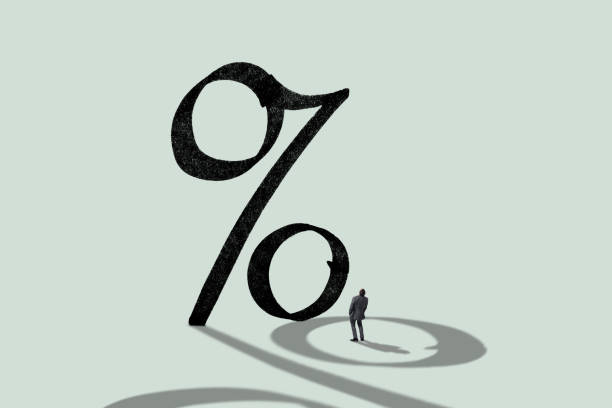
Interest rate is basically the percentage charge to the money borrowed from a banking or financial institution or person or the percentage earned from the money saved in a bank or loaned to other institution ofrperson. Interest is the compensation a lender receives for bearing the risk of lending the money, and for the borrower it is the price or cost one pays to avail the money now than to wait for years to save up the same amount and then spend. The interest rates are determined by the supply and demand of funds amongst consumers, businesses, and governments.
Types Of Interest Rates
There are three types of Interest Rates
- Nominal Interest Rate: Is the stated interest rate on which the interest payments are calculated.
- Effective Interest Rate: Is considering compounding over the full term of the investment. It is used to compare annual interest rates with different compounding terms such as daily, monthly, quarterly, and yearly.
- Real Interest Rate: Is considering the impact of inflation on the nominal interest rate. The real interest rate deducts the rate of inflation from the nominal interest rate.
Factors Affecting Interest Rates
Interest rate levels are a factor in the supply and demand of credit. Interest rates change time to time, and they also differ on the type of loan. The factors that affect the interest rates are credit risk, time, tax considerations, convertibility of the loan, inflation, and monetary policies by the government.
Supply and demand of money and credit in the market also determine the interest rates. If the supply of money or credit is more than the demand, then the interest rates will be low, and if the supply of money or credit is less than the demand for the same, then the interest rates will be high.
Interest Rate Affects
Rising or falling interest rates have their own set of affects on individuals and businesses. Rising interest rates increase the cost of borrowing which in turn affects consumption as individuals will postpone borrowing and hence decrease the spending. With the rising cost of borrowing, banks will also offer attractive interest rates for individuals to create and maintain deposits with the banks and thereby the individuals get rewarded with higher interests for their savings, thereby encouraging a saving mindset and discouraging spending. Also, stocks and bonds become less attractive as banks offer better and safer returns.
Rising interest rates do not benefit the economy as consumption is reduced, it also affects the banking system as the cost of borrowing is higher to an already limited market of borrowers during such times. Additionally, the banks pay out higher interest on deposits than the normal times, hence the cost of funds is higher to the banks as well, but the return from those funds is limited as the borrowers are limited when the interest rates on borrowing is higher.
Basically, higher interest rates mean don’t borrow or spend, but save. And lower interest rates mean borrow and spend now, save later.
Interest Rate Strategies for Entrepreneurs
As we have read from above, interest rate levels have a considerable affect on businesses, hence can affect the business plans of an entrepreneur. Those entrepreneurs with enough personal funds at their disposable are in the best situation as they don’t have to borrow any funds for their business operations. Entrepreneurs benefit from enjoying a higher interest rate return from their personal equity investment in the business, hence what may have been a cost to an entrepreneur if he/she borrowed from the banks or a financial institution, is now an income, as the entrepreneurs has made the investment in the business with this personal funds.
When interest rates are low, entrepreneurs have the opportunity to borrow the funds at a cheaper cost of interest to them and execute their business expansion plans. However, executing these strategies could also depend upon current market conditions and future market trends for the business, sector, or industry. Hence if the opportunity to expand is stronger than the cost of borrowing the funds for that expansion, then entrepreneurs must not bother over the higher cost of borrowing.
Another strategy entrepreneurs can use to ensure continued business even during slow downs due to higher interest rates is to provide credit to qualified customers at lower interest than the banks or at similar interest as the banks but without the burden of the tedious paperwork that gets involved in securing a loan from a bank or any financial institution. It also ensures strengthening of the existing customer relationship. However, entrepreneurs must not get carried away by financing or providing credit to all of their customers, as it may put the business at risk.
It is also important for the entrepreneurs to do a detailed analysis of the terms and conditions of the borrowing from the bank or the financial institution. Irrespective of the prevailing interest rate, and market conditions banking and financial institutions will be willing to lend in cases where the business ticks correct in all the factors for loan approvals, hence entrepreneurs may be promised a lot of things in speech, but a detailed read of the loan agreements will reveal unsaid conditions that could derail the business strategies.
Conclusion
Interest rate levels can be thought of as an expense or an income generating factor in business. It is important to have the right mindset to use interest rates accordingly.
References
Forces That Cause Changes in Interest Rates
Things That Happen When Interest Rates Rise
Image source – istockphoto.com